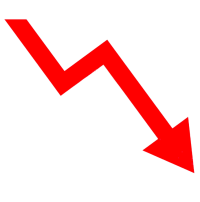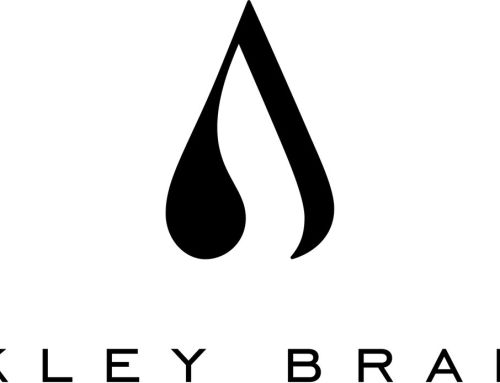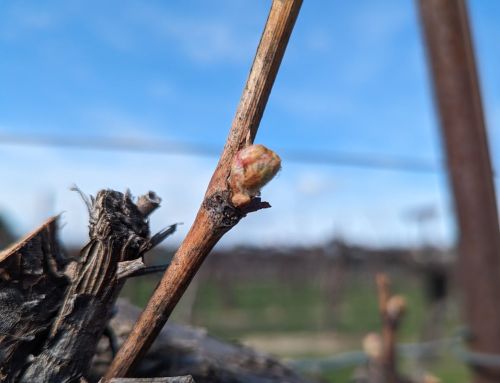 In 2019, something unusual happened. In August of that year, I didn’t open a single bottle of cork tainted wine for review. (Cork taint is a contaminant in wine most commonly caused by trichloroanisole.)
In 2019, something unusual happened. In August of that year, I didn’t open a single bottle of cork tainted wine for review. (Cork taint is a contaminant in wine most commonly caused by trichloroanisole.)
To give a sense of how strange that is, it only happened on two other occasions in the prior four years. In fact, just that June I’d had 10 corked bottles. In September, I only had a single corked bottle. Then I did not have another corked wine for the rest of the entire year.
That means I had one corked bottle over a five-month span while opening hundreds of bottles. That was, to put it mildly, unprecedented.
Overall in 2019, I had 35 cork tainted bottles of wine. That might seem like a lot, but for someone who tastes wine for a living, I assure you that it is not. My numbers for 2019 were actually quite low compared to recent years. For example, the year prior, I had 64 cork tainted bottles, tasting roughly the same number of wines.
August of 2019 seemed to mark a turning point for cork taint. In 2020, I had corked bottles of wine every month except two. However, I had a total of 23 tainted bottles – the lowest number I’ve ever had across a single year. Again, I was tasting roughly the same amount of wine.
Why so fewer corked bottles?
My first thought as to why I was seeing so fewer corked bottles was that perhaps I’d had a large diminution in my sensitivity to the fault. However, I’ve seen no evidence that’s the case, and I continue to detect cork taint at a low level.
My second thought was less frightening and also more compelling. Was I actually witnessing a dramatic decrease in cork taint? In 2015, I had 96 corked bottles of wines in my tastings. Now I was seeing a quarter as many.
I’ve collected data on closure type and cork taint for the wines I taste for review going back to 2016. (In 2015, I have data on the total number of wines and number of corked bottles but not closure type.) I hadn’t rolled up the data for some time, so it seemed like a good time to do so to see what the data said. The answer was quite surprising.
A dramatic increase in alternative closure usage contributed to a decrease in the number of corked wines.
Looking at the data, yes, the overall number of cork tainted wines that I was seeing during my tastings had gone down significantly. However, this was due in part to a large increase in the number of producers using alternative closures that are taint-free that I wrote about recently.
As one would expect, the large decrease in the number of wines closed by natural cork contributed to a dramatic drop in the overall number of corked wines I saw. But that also doesn’t appear to tell the entire story.

Cork taint appears to have gone down slightly.
When looking at the percentage of wines closed by cork, the data are less convincing that cork taint has gone down dramatically. If anything, it appears to have gone down slightly, as the change is only dramatic when compared to some years.
For instance, in 2016, a shocking 6.21% of wines I opened for review showed signs of TCA or some other moldy contaminant. In 2020 that number was 2.78% and in 2021 it was 3.05%, essentially half as much. The 2020 percentage is the lowest number I’ve ever seen, and 2021 is the second lowest.
However, as recently as 2017, 3.59% of the wines I sampled presented as cork tainted, which is in the ballpark of my 2020 and 2021 numbers. We know that, unless some change has occurred, data might vary but eventually regresses to the mean. So some years the numbers will be higher, and we would expect that some years they would be lower.

Is there an actual change happening in cork taint?
Still, it is unequivocally true that 2020 and 2021 were both the lowest number and lowest percentages I’ve ever seen for cork taint. I haven’t done a formal data analysis, but I would assume the differences would be statistically lower than other years given the large sample size.
I will note that the roughly 3% number I saw in 2020 and 2021 is identical to the number that the Cork Quality Council (CQC) reports seeing those years. Looking at the CQC data also gives reason for hope.
In Q1 2022 and Q1 2023, CQC reports 1% of corks with TCA at less than one part per trillion. Given that my numbers have generally tracked well with theirs, I would expect that to start showing up in my tastings last year and to a greater extent this year.
Unfortunately, my 2022 data were lost in a hard-drive crash. Will I see a dramatic decrease in my 2023 numbers from 3% down to 1%? We’ll see when I roll the data up next year.
Why might there be a decrease in cork taint?
To the extent that there is an actual decrease in cork taint, there are several reasons it might be happening. The first is that a number of major cork producers have introduced corks that are individually tested for cork taint using GCMS.
Is this testing perfect? It is not. It is also very expensive and exclusively used on high-end wines. However, it does likely cut down on the percentage of tainted wines, at least for those who pay for the privilege. That might account for some of the reduction I saw in 2020 and 2021.
Perhaps more importantly, in 2021, Amorim, the world’s largest supplier of closures, announced that it had added a step to its production that would eliminate cork taint from all of its corks.
Does this technology work as advertised? That remains to be seen, but the Cork Quality Council data indicate that, at minimum, they saw a dramatic decrease in the percentage of cork tainted wines that coincided with the rollout of that technology.
What’s next for cork taint?
Even if we do see the dramatic decrease in cork taint the that CQC numbers indicates is coming, I would argue that 1% remains an unacceptably high level. This is particularly true when there are closures with a proven track record of success where their TCA contamination rate is zero. The industry needs to continue to work to completely eradicate cork taint. Until it does, it remains an embarrassing blemish on the industry.
Still, when one combines the recent increase in alternative closure use with a decrease in cork taint that the Cork Quality Council data indicates is coming – I’m personally in the trust but verify stage on that – it means that consumers should see a lot fewer cork tainted bottles on wines released now than they did five years ago. That’s something that every wine lover should celebrate.
Will we ever be able to get the percentage of cork tainted wines to zero? It seems hard to imagine as long as wines are closed with natural cork. That said, recent technological improvements seem promising.
Even if the problem of cork taint is eventually solved once and for all, don’t worry. We still won’t be done with cork taint. Anyone who has a wine cellar of any size has plenty of corked bottles in there waiting for them.
NOTE: Northwest Wine Report is now partially subscription-based. Please consider subscribing to support continued independent content and reviews on this site.
To receive articles via email, click here.







Nothing is more disappointing than opening an old bottle you have been sitting on for 10-20 years, and having it be corked.
I question whether you could fully ascertain cork taint, or at least (most common) incidious low-level cork taint, unless you were opening multiple bottles of the same wine.
Low-level cork taint often not overt, merely robbing the wine of fruit intensity. Ditto random oxidation caused by natural cork inherent flaws. Improved detection failing to detect this as effectively.
As a commercial wine buyer for one of the largest retailers on the planet, I am frequently required to look at the same wine hundreds of times, and those still under natural cork (often premium -much commercial now under DIAM) still display alarming rates of variation.
Peter, I think you’re mixing two different things here, cork taint and bottle variation which can be related or separate.
In terms of cork taint, am I catching 100% of the TCA-tainted bottles I open for review? No. I am not. As I always say, what are the chances that I have reviewed cork tainted bottles of wine? The chances are 100% given the number of bottles I open and how long I’ve been doing this.
That said, I have a multi-step process to try and detect as many tainted bottles as I can. First, I smell the cork which in almost all cases is the source of the taint. TCA is often magnified on the cork itself, allowing for easier detection when it might be at low levels in the wine. Then I sample the wine. Finally, 24 hours later, I resample every wine in large part looking for latent cork taint. I do this because I occasionally find bottles tainted at a very low level this way.
Keep in mind as well that I am tasting for review newly released wines that in some cases have been very recently bottled. Would I potentially find more cork tainted bottles if I opened the exact same bottles of wine in 3-4 years or 10 years? Sure. But it’s about the best I can do, and doing this adds considerable additional work.
I’m also very sensitive to cork taint, easily picking up bottles at around 1ppt. I’m also aware of how cork taint presents in terms of muting aromas and flavors, even in the absence of an overt moldy aroma. Earlier this year I had a bottle that presented with such aromatic muting, put the second sample in the flight, and confirmed that the first bottle was cork tainted though I didn’t smell the taint itself. (I did several days later.)
Again, am I catching every bottle though? No. As a reviewer, I find that deeply troubling. Even GCMS does not pick up every bottle, and some that it misses are at high levels!
Bottle variation, however, can be another thing and can also intersect with cork taint. As you know, part of the issue with natural cork closures is that each individual cork is different. The amount of oxygen contained in each cork is also different.
As you note, opening a large number of bottles of the same wine, one sees differences large and small. Many years back I bought a case of wine on closeout. My wife and I drank it as our summer wine. We opened all 12 bottles within 4 to 6 weeks. My scores on the wine ranged from 92 (should have bought a second case) to 87 (would have passed altogether) and I had two cork tainted bottles. It’s part of the reason that I’ve advocated for closures with higher rates of consistency over the years.
However, it’s a complicated matrix, as some of that variation can be due to the closure, some of it could be due to bottling practices, and others still could be due to winemaking practices. Those can all interact as well. I’ve certainly seen bottle variation in DIAM-closed wines, as I have with other closure types. Thanks for the thoughts!
Great article Sean. Corked wines used to be a big issue over here in Australia, but the widespread adoption of screwcaps (almost 20 years ago) means it’s only showing up in cellared wines and the occasional import (i.e. hardly ever). I have a distant memory of hearing that Australian wine had a disproportionately high number of corked wines as we didn’t have centuries-old relationships with the cork suppliers. Hence, we received inferior corks.
Some thoughts after reading your essay.
The wealthiest family in Portugal is the number one cork producer, billionaires, they spend millions on propaganda. Want a free trip to Portugal? Write an article extolling the virtues of cork bottle stoppers.
Many of the wood closures you are getting are plastic cork granule composites. Some corks are in a condom of sorts, plastic coated to keep TCA a in the wood.
So much for “natural”. The composites won’t compost. No producer will tell me the materials used. When including ruined wine, cork has the highest carbon footprint.
I gave up wood in 1992. Since I started my own winery in 1999 we have never used wood. The fail rate was to high, we have an unconditional guarantee on our product.
As a wine judge I flagged 8% of wine as tainted back when that was about 100% of cork finished wines under evaluation. That is why competitions want multiple bottles, for second chances. Also cork closed bottles have a significant leakage rate.
I don’t think there should be a second chance, it is unfair to the consumer. I won’t enter a wine where they give second chances.
I suspect that the failure rate of “natural “ cork is still high.
Cork salespeople spend less than 90 seconds with me. I rudely interrupt to ask if they guarantee a failure rate of less than 0.1%, or they pay for the whole lot.
We are a satisfaction guaranteed business. Since 1999 we have had a closure failure rate that is several zeroes after the decimal. More likely a defective bottle than a bad closure.
Amorim is far and away the wealthiest family in Portugal. They spend millions on wining, dining, accommodations and travel for writers. Insignificant to billionaires.
Paul Vandenberg
Paradisos del Sol Winery and Organic Vineyard
If found floating in the river with a knife in the eye, look to Portugal.
Is it possible that as your tasting career progressed and you gained more clout and notoriety that you were tasting better wines, made with more care and attention? Perhaps in 2015 the samples you were being sent were more humble and less focused on clean wine making. Are you able to track the price of wines tasted over this time period as well? The scores might also help to illustrate if you were tasting ‘better’ wines, but scoring is subjective so that wont show causation.
I think there is no doubt that cork technology and alternative closures are reducing the prevalence of TCA, but I wonder if the data isn’t as drastic as it appears.
M, great question. My 2015 through 2021 samples were all submitted to Wine Enthusiast, a national magazine, and I was reviewing everything from high production grocery store wines to the biggest cult wines in Washington. So I don’t believe that there was any change in what was submitted.
I want to be clear though, that I have *not* seen a dramatic decrease in the *percentage* of cork tainted wines. I’ve seen a *modest* but what I believe is significant decrease in the percentage of cork tainted wines. My six year average was 4.13%, and my 2021 numbers were 3.05%. 2020 and 2021 were, however, the two lowest of the last six.
What I did see is a dramatic decrease in the *total number* of cork tainted bottles. However, that had more to do with a dramatic increase in the use of DIAM and other TCA-free micro-agglomerated closures than a dramatic decrease in cork taint itself.
I’m also positing that a potentially significant decrease in cork tainted bottles is coming based on data that the Cork Quality Council has reported. However, whether than change happens or not remains to be seen.
Sean, thanks for your continued efforts in the battle to eliminate TCA. I’ve had a number of wines recently that have been contaminated, and it’s incredibly frustrating after aging these wines and then going through the process of working with the winery or shop to get them replaced.
In an effort to prevent this disappointment, do you know of a way to discover which wineries are using alternative closures? Whether it’s cellartracker or something else, I think this would be a a great way to help create some transparency. Then a consumer can make a more informed decision, especially if they are planning to age the bottle.
I did find an alternative database called corkwatch that focuses on wineries that use natural cork – essentially the opposite of what I’m looking for!
Thanks!
Brian, sorry to hear about the corked bottles! We’ve all been there.
It’s actually for this exact reason that I have started listing in my reviews the closure type that the wine uses. I know personally, I am much more likely to buy a wine and buy it in some quantity if I know that I don’t have to worry about cork taint. I am also more likely to bring these wines over to a friend’s place or take them on vacation. I’m tired of bringing backup bottles due to TCA or just having corked bottles of wine on special occasions. You can read more about listing closure type in reviews here:
https://www.northwestwinereport.com/closure-type
I’ve contemplated over the years trying to make a list of producers using TCA-free closures, but it’s complicated. Some use TCA-free closures on some of their wines, not all. I’ve decided that, at least for the moment, listing closure type individually for each wine in the way to go.
Does anyone buy vintage 80s wine with cork contamination?